Miniature jigsaw puzzles made from postage stamps … that sounds like something I would like, right? This stamp is so small I almost had to use tweezers to put this back together:
These amazingly tiny wood jigsaw puzzles are made by my friends father, Lynn Warner. Here he is at the Indiana State Fair demonstrating his woodwork (on a foot powered saw that he built):
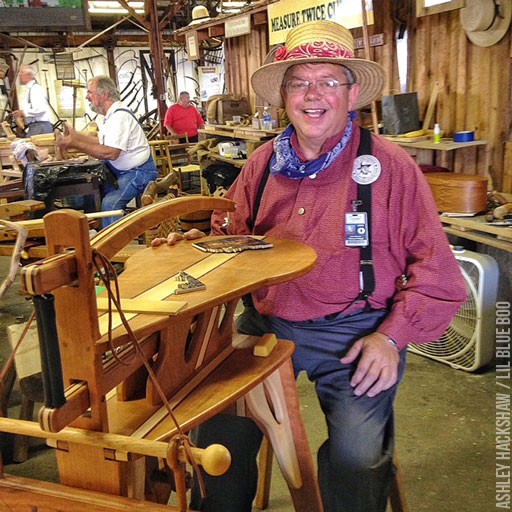
A stamp commemorating the 100th anniversary of mail order:
The intricate cuts on the back:
This puzzle is so small:
The pieces of the puzzle are smaller than a pea…so you can imagine how small the intricate cuts have to be!
These are so unique because Lynn uses a technique which allows the main image from the front of the puzzle to be seen as cut-out shapes on the backside too:
A little on the process from Lynn:
“A commemorative postage stamp is affixed to a 3/16″ plywood, then given 2 coats of clear acrylic finish. Using a very small (8/0) jeweler’s coping saw blade installed in a standard scroll saw the puzzle is cut. Yes, a magnifying glass equipped with a light is used during cutting. After cutting is complete, the puzzle’s backside is sanded and the sawdust is blown away. The process takes an average of an hour. The time varies with the particular stamp being cut and the number of times the cutter has cut the chosen stamp.”
Lynn includes a history of jigsaw puzzles in the packaging with each of his puzzles. A few excerpts:
- The originals of jigsaw puzzles go back to the 1760’s when European map makers pasted maps onto wood and cut them into small pieces.
- With the inventions of the treadle jigsaw and plywood in the late 1800s and early 1900s, puzzles for adults and entertainment emerged into a full-blown craze in the United States.
- Because wood puzzles had to be cut one piece at at time, they were expensive. A 500-piece puzzle typically cost $5 in 1908, far beyond the means for the average worker who earned only $50 per month. High society, however, embraced the new amusement. Later, die cut cardboard puzzles brought the price down to a rate that most people could afford. With the lower prices, some companies began giving puzzles as premiums for buying their product.
- With the onset of the Great Depression in 1929, puzzles for adults enjoyed a resurgence of popularity. Puzzles seemed to touch a chord, offering an escape from the troubled times. With incomes depleted, home amusements like puzzles replaced outside entertainment. During the 1930s’ craze for puzzles, drugstores and circulating libraries added puzzle rentals to their offerings. They charged three to ten cents per day, depending on their size.
I wonder how many pieces were lost during rentals? And did they count the puzzle pieces when they came back just to make sure they were all returned?
I had to posed the little tiny puzzles with a few of my little tiny railroad miniatures. I think this looks like Sir Richard Branson:
A family of deer:
It’s funny, I remember doing puzzles when I was younger. My grandparents always had a puzzle out to work on. I think we did a few puzzles while we were at the Hemlock Inn a year ago. Since they were community puzzles they were alway inevitably missing a piece or two. I remember Harper the Intern trying to match puzzle pieces back to the original box in her spare time! I think I might start looking for some good puzzles to have around the house for snow days. Jigsaw puzzles are good for the brain!
A few other things to check out:
A 32,000 piece puzzle. The box weighs 42 pounds and the finished puzzle dimensions are 17′ x 6′. I think this is my new answer to the question: what would you take with you to a deserted island?
This 15-year-old is the fastest puzzler on the planet. She can assemble about 18 pieces per minute. I think my eyes would fall out.
Supposedly the hardest jigsaw puzzle ever…a 1,000 piece CMYK puzzle in 1,000 colors.
Thank you Lynn for sharing your awesome work with us!

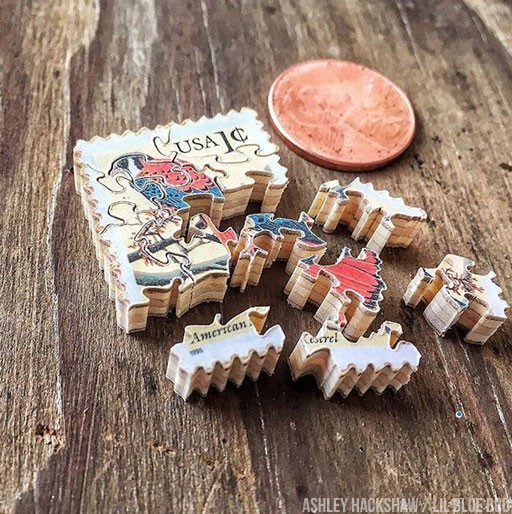
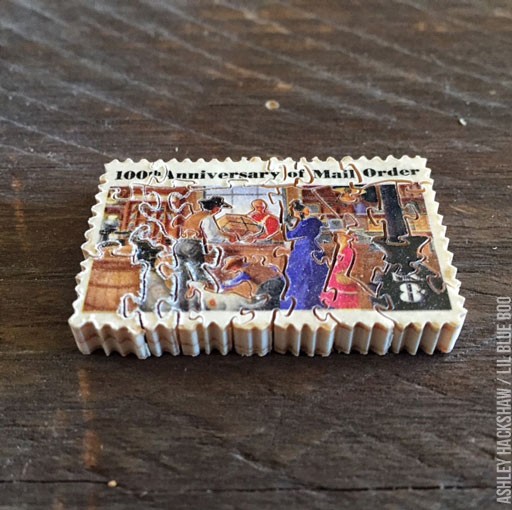
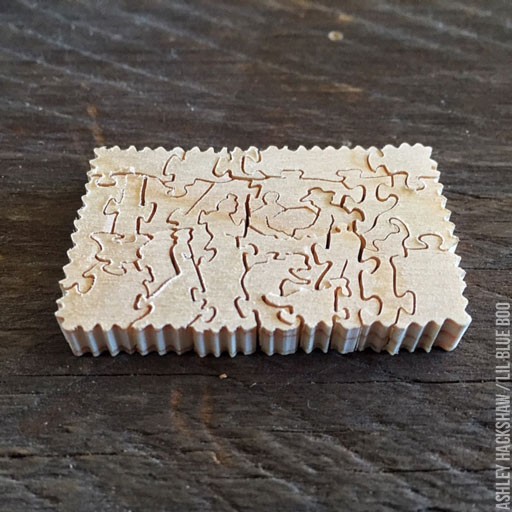
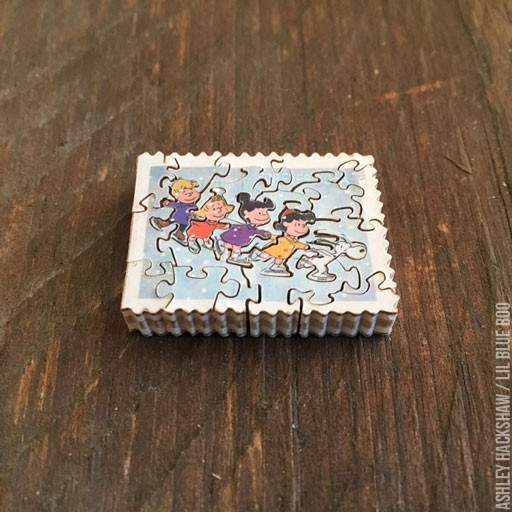
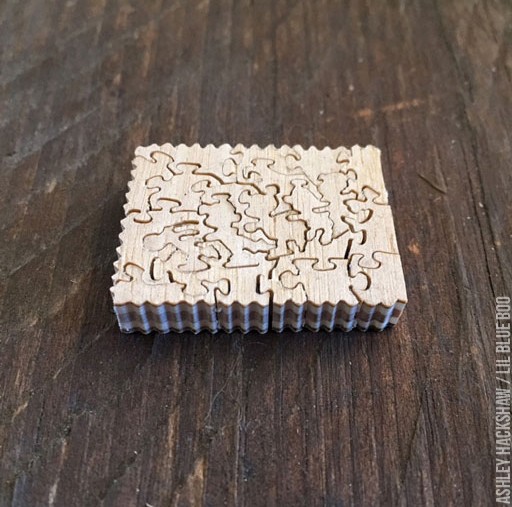
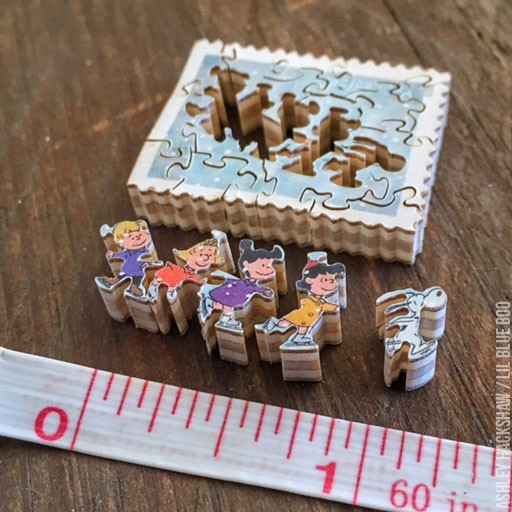
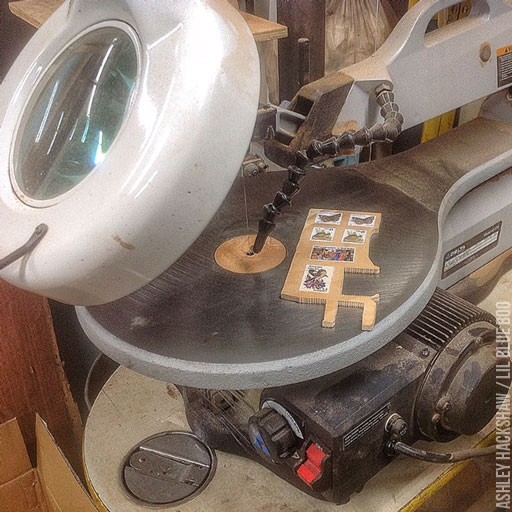
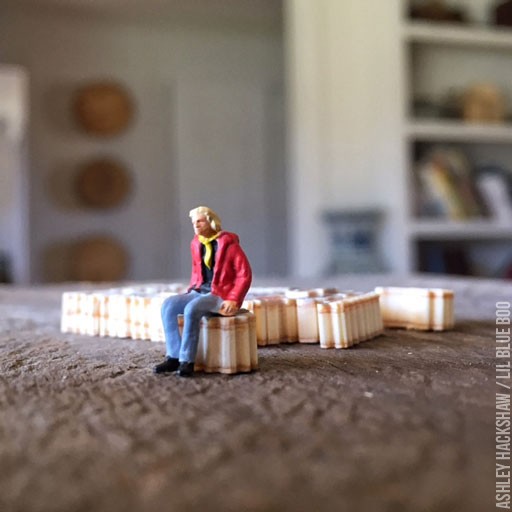
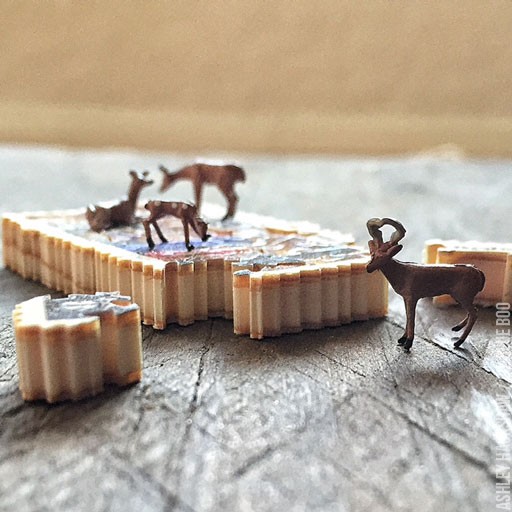
These are wonderful. Is there a way to buy them online?
He doesn’t sell the online! I asked him to but I think it would result in having to make too many and it would take the joy out of it. If you want to email me a subject matter that interests you I will make a note and maybe he’ll end up cutting one. You never know 🙂
This is SO cool! And how neat that the first puzzles were maps. My grandma always has a puzzle out that she’s working on, and gets so many as gifts that I imagine she must have a hundred or more from over the years!
I would also love a way to buy these online! These would make SUCH a cute gift!
So respect his art form and yes, me too, I want one! So love puzzles.
These puzzles are amazing! I don’t know how he can cut such small intricate pieces. I once met an artist that does drawings on pistachio shells.
P.S. The Charlie Brown is my favorite.
Wasgijs are great fun. It is Jigsaw backwards. You are not given the picture, only the scene watching it. There are some connections for starting. They are made in New ZealAnd.
So cool!
it is amazingly hand-craved.
My youngest and i have a puzzle out nearly all the time. (We bought a big picture frame and inserted a piece of plywood for the glass so we can move it places- in and out of the way of what others are doing around here) she’s 14 now and its still a great way for us to talk and connect in an evening. 🙂
These are great! If only I could do this. So detailed. I have inherited stamps that would be so cool to turn into a piece of art like this.
I would love to purchase one for my mother! Any subject. Please let me know how to contact him.
My house is filled with woodwork that my grandpa has made me with a scroll saw. So intricate and detailed. That’s what he loves to do, and my grandma says it keeps him going at 84. He can’t make much now. His hands shake too much to hold the wood or blade steady. My grandma has always had a puzzle out. When I was little, we would stay up late into the night working on a puzzle in a quiet house. Comforting memories. If Lynn would ever consider selling a stamp through the internet, I would love to buy one for my grandparents. They would sit and marvel at it for hours. I understand the “Joy in making them” though. That’s what my grandpa would say too.